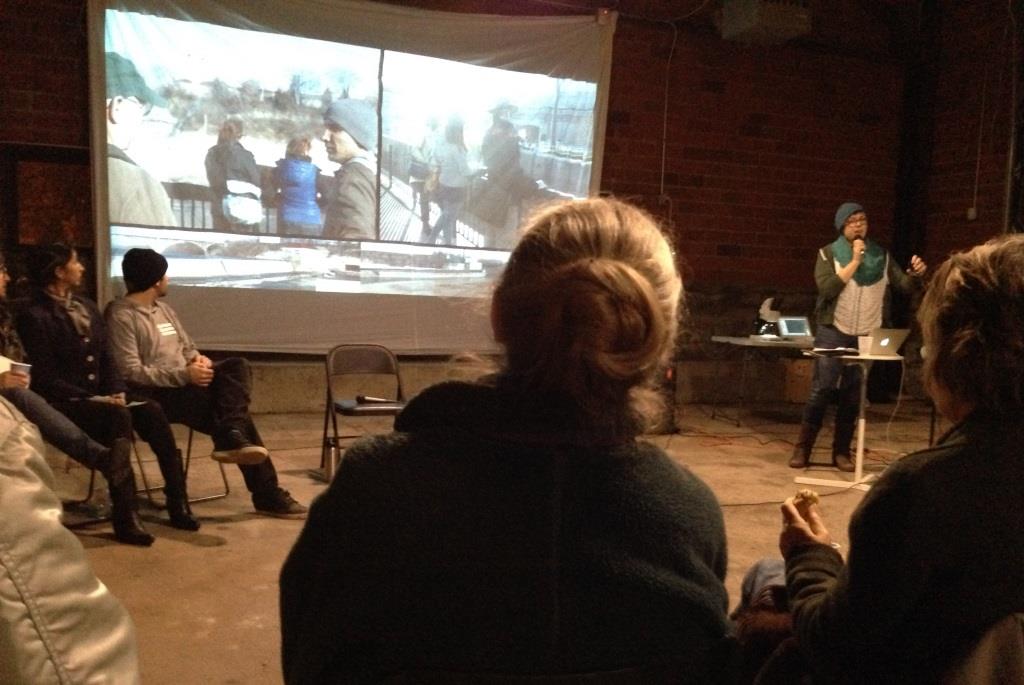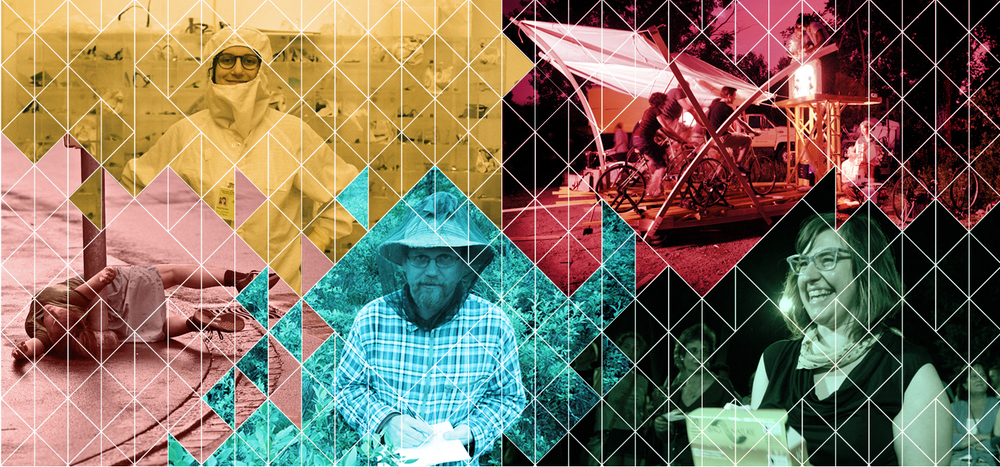
St. Paul’s new art-science “Collaboratory” holds their first public gathering
City Art Collaboratory public gathering, November 1, 2013 at City House in St. Paul. Photo: Todd Boss
At St. Paul’s historic City House on November 1, the City Art Collaboratory, a new art-science program of Public Art Saint Paul (a Knight Arts grantee), held its first official public gathering. The Collaboratory brings together artists and science professionals to talk across disciplines for the sake of exploring “what art can say about the environment of this place we live. Specifically,” says program manager Shanai Matteson, “our focus has been on the river” and on seeding collaborations to investigate “where the city meets the river in interesting ways.”
To that end, in the last year the program fellows met at least monthly to take field trips together, to see first-hand how our river city conducts its business with and on the waterway. The group toured Lock and Dam No. 1 and talked with staff experts there about measures to prevent the further spread of “invasive species” like Asian carp. They went on a ride-along with street maintenance crews during a winter storm to get a feel for how the city handles plowing and salting its roads. They visited St. Paul’s wastewater treatment plant; they discussed practical realities of public access (or lack thereof) to the river’s resources from the city’s nearby Lowertown neighborhood.
The Collaboratory currently consists of a cohort of seven STEM fellows and seven artists. It’s a young initiative – just entering its second year – and an outgrowth of Public Art Saint Paul’s sustainable art-making program. Marcus Young, artistic director of the City Artist in Residence program, has called the Collaboratory “the R & D wing” for public art projects in St. Paul. And here, that really means something: A 2009 city ordinance mandates that St. Paul involve artists in every major capital project it undertakes, putting artists side by side with urban planners, architects and engineers to develop and maintain these endeavors.
Image courtesy of City Art Collaboratory
Last Friday, about 50 of us turned out to sip cider and listen to the Collaboratory’s team report back on their various projects-in-progress. Sculptor Aaron Dysart talked about bringing people, one-on-one, to investigate the Mississippi River by canoe. City Artist-In-Residence Amanda Lovelee has created a “Really Long River Blanket,” to make it easier for larger groups (like the Collaboratory cohort) to gather together for a meal and conversation wherever their bikes may take them. Multimedia artist Asia Ward plans to host life-drawing workshops along the river, where visitors can sketch the macro-invertebrates of the Mississippi in their native environment, on-site via live projections of the tiny river denizens as viewed under a microscope.
Social scientist Valentine Cadieux has launched an ingenious platform to foster civil dialogue between people with opposing positions on agricultural policy and various food systems (from boutique organic operations and Community Supported Agriculture to the corporate behemoths of agribusiness). Her “uncomfortable dinner party” workshops make use of whimsical role-playing techniques in the service of substantive, fruitful conversations about sometimes deeply contentious issues.
Artists Molly Balcom Raleigh and Janaki Ranpura are also teaming up to offer dinner parties: “Carp-tactacles” with art and food and conversation themed around the infamous fish species. The idea is still very much in the planning stage, but the two talk about a desire to cultivate an “ethic of stewardship” and mindfulness on the issue. They say their intention is to instigate thoughtful discussion about conservation policy, and about the intersections of memory and food culture, by bringing gastronomic experience into conversation with philosophical concerns about environmental and civic obligations.
Friend of the Collaboratory cohort, Minnehaha Creek Watershed District education manager, Leslie Yetka, offered a presentation on her team’s efforts encouraging public engagement with natural resources through community game-play. The Collaboratory’s program assistant, Andrea Steudel, is working with Minneapolis Art on Wheels and the Bell Museum to create a modular “diorama dome,” an immersive, cinematic and dynamic environment bringing elements of the natural history museum to life with digital video – a 21st century, new media update on the diorama exhibits the museum has become known for.
Marcus Young, one of the “curators” of the Collaboratory, ended the evening’s conversations by noting the fluid nature of the program, making a point of the fact that these partnerships are open-ended by design. The Collaboratory has little to do with measurable outcomes or economic development. It’s an investment in artful city-making with an eye on the long view: it’s about building relationships, and trust, across the boundaries of disciplines, academic paradigms and modes of working. And it’s about the promise of serendipity that might spring from the creative friction generated by such thoughtful cross-sector partnerships.
As he wraps up, Young articulates a question I suspect was at the top of all our minds: “Listening tonight, I find myself wondering how these nascent ideas might eventually impact city art. Which of these projects could be scaled up, and how?”
Honestly, not all of the Collaboratory’s various ideas will pan out, I imagine. In fact, by the end of the night’s presentations, I have more questions than answers about the particulars. But the hopefulness behind the experiment and purposeful play driving these conversations is infectious. I wonder, what civic innovations might be possible in St. Paul if such art and science collaborations in city-making were to become truly commonplace?
For more information about the City Art Collaboratory, visit cityartcollaboratory.squarespace.com.
Recent Content
-
Artsarticle ·
-
Artsarticle ·
-
Artsarticle ·

